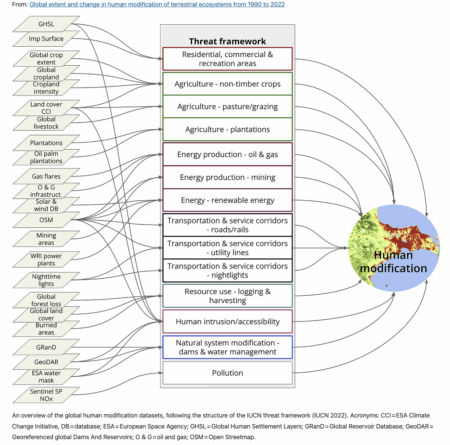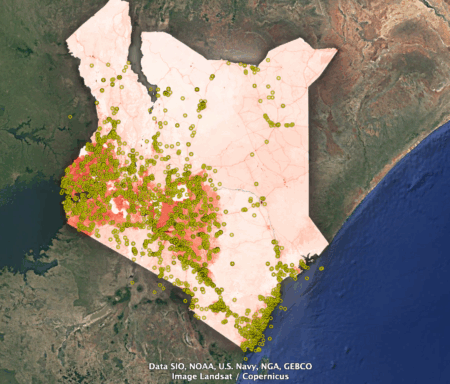- Links between protein-source diversity, household behavior, and protein consumption inadequacy in the Indian rural semi-arid tropics. More diversity in protein sources, including livestock, would probably lead to more consumption, especially if linked to more education on its importance.
- Integrating Local and Indigenous Animal Genetic Resources for Food and Agriculture (LIAnGRFA) into global biodiversity governance. We wont keep livestock diversity for long if we don’t integrate its conservation into existing mechanisms.
- Introduction to chicken genetic resources of India: a comprehensive review. India seems to agree with the above, at least with regards to its chickens, and is doing something about it.
- Out of Africa: genetic characterization and diversity of Mashona cattle in the United States. Something will certainly have to be done about the Mashona in the US if its interesting but limited diversity is to survive.
- Impacts of Climate-Land Dynamics on Global Population and Sub-Populations of a Desert Equid. Ditto for the Asiatic wild ass, although I suppose its contribution to human protein supply is pretty safe.
- Archaeogenomic insights into commensalism and regional variation in pig management in Neolithic northwest Europe. Even Neolithic European farmers managed the diversity of their livestock, pigs in this case.
- Agronomic performance, herbage quality, methane yield and methane emission potential of pasture mixtures. All those diverse livestock might as well be eating the sort of feed that leads to lower methane emissions.
- Ancient dog mitogenomes support the dual dispersal of dogs and agriculture into South America. Domestic dogs were taken into South America along with maize, according to their genetic structure. No word on whether they were used as protein sources.
- Footprints of Human Migration in the Population Structure of Wild Baker’s Yeast. Saccharomyces cerevisiae is something else whose genetic structure was heavily influenced by early farmers, and indeed continues to be by modern farming.
- Revealing the ancient origins of blonde beers: Phylogeography and phylogenetics of cryotolerant fermentative yeast Saccharomyces eubayanus from pre-Hispanic pottery in Northwestern Patagonia, Argentina. Did those early South American farmers ferment their maize, I wonder? They had the yeast for it, which eventually made it to Europe and gave us lager. And no, beer is not a good protein source.
Nibbles: Cherokee Three Sisters, Australian native grains, Ancient Peruvian irrigation, Indian apples, IFOAM Seed Platform, MSB, Chinese conservation, Protected areas, Soybeans breeding, Funding cuts
- Three Sisters rematriated to historical Cherokee Nation.
- Native grains returning to Indigenous land in Australia too.
- May need to bring back agricultural practices too, like in Peru.
- Meanwhile, in India, farmers are trying to grow apples in new places. Go figure.
- Anyway, seems like the IFOAM Seeds Platform might be able to help.
- And genebanks too of course, like the Millennium Seed Bank.
- As part of a comprehensive conservation systems, goes without saying, like in China.
- Which also include climate-proof protected areas.
- It worked for soybeans, after all.
- Well, for now anyway…
Erna vs Otto
Is it possible to distil the ongoing debate over how to conserve plant genetic resources into the contrasting views of two people?
For Julia Nordblad of the Department of History of Science and Ideas, Uppsala University, the answer is a resounding yes, if the two people are Otto Frankel and Erna Bennett, both very much friends of the blog. She sets out her argument in a paper that is just out:
…Frankel and Bennett exemplify that there are indeed different versions of planetary temporalities that imagine the entanglements between the social and the planetary differently, and thus end up promoting distinctive politics for amending diversity loss and saving evolution. For Frankel, the solution lay within the temporality of development. Modern technology could be used to replace the storage of evolutionary time in the “primitive” agriculture, and progressive norms could emerge that would achieve protection of wild evolutionary time in the natural world. For Bennett in contrast, development was not the only possible historical trajectory, but a particular historical process driven by economic and political interest. Her vision of how evolutionary time should be protected was to let it be decentralized in varied agricultural practices shielded from corporate interest that would otherwise quickly drive diversity down and eclipse the evolutionary temporal horizon.
So it’s possible. But is it helpful?
Well, I’m torn. You can certainly find descriptions of the early days of the crop diversity conservation movement that have a larger cast of characters. Like for example the equally recent Australia’s Search for Greener Pastures: The Foundations of the Global Genetic Resources Movement, 1926-1980 by Derek Byerlee. Or the earlier but still canonical Scientists, Plants and Politics: A History of the Plant Genetic Resources Movement, by Robin Pistorius.
But there’s something satisfyingly protean about Bennett and Frankel — and indeed their sort-of-rivalry. So I’m going to say that it is indeed helpful — at least to get you started understanding this history.
And speaking of protean: where would Vavilov stand? If I read another recent paper correctly, by Jeffrey Wall of the University of Turku, somewhere in the middle. Probably a good place to be.
Modified ecosystems and the conservation of crop diversity
A new global assessment of the state of terrestrial ecosystems has just been published, focusing on the extent of human modification due to “industrial pressures based on agriculture, forestry, transportation, mining, energy production, electrical infrastructure, dams, pollution and human accessibility.” 1
As is my wont, I tried to find a form of the data that I could shoehorn into Google Earth, but I failed. Fortunately GIS guru Kai Sonder of CIMMYT was able to snip out a kml file of overall human transformation as of 2020 covering Kenya — don’t ask me how. But thanks, Kai. I put on top of it genebank accessions from Kenya classified as wild or weedy in Genesys.
I don’t know quite what to make of this. The wild populations seem to have been mainly collected in areas that in 2020 were very highly affected by human activity. But is that good or bad?
It could be good — in a sense — if the high degree of human transformation means that the original populations are not there any more. 2 Phew, good thing they were collected! On the other hand, it could be bad if the concentration on easily accessible and modified areas means that the genetic diversity currently being conserved is not representative of what’s out there.
What do you think?
But of course what I really want is a version of this which focuses on agricultural areas and is updated in real time. Yes, a perennial favourite here: a real early warning system for erosion of crop diversity.
Nibbles: Maize history, Maize in Tanzania, WorldVeg feature, Pigeonpea speed breeding, Valuing nature in food, GIAHS, Ancient Egyptian brewing redux
- The history of maize — according to Pioneer.
- The importance of maize — according to Dr Mujuni Sospeter Kabululu, Curator, National Plant Genetic Resources Centre—Tanzania.
- The future of vegetables — according to WorldVeg.
- The future of pigeonpea — according to ICRISAT.
- How should we value nature in our food systems? By true cost accounting — according to TABLE.
- A good way to value nature in our food systems is through recognizing Globally Important Agricultural Heritage Systems — according to FAO.
- How strong was ancient Egyptian beer? Not very — according to ethnoarcheobotanists. But it’s still worth trying to reproduce it — according to me. Seneb!

